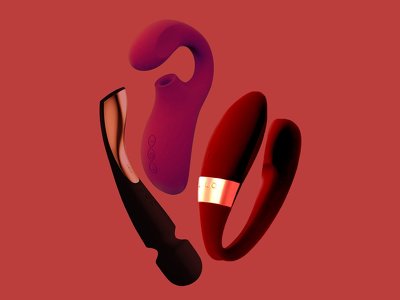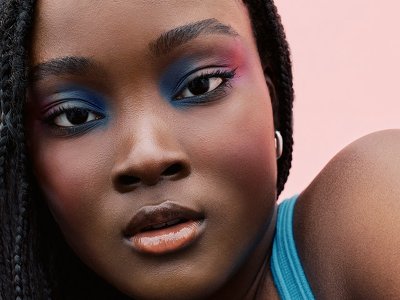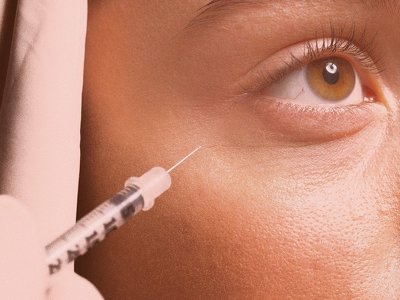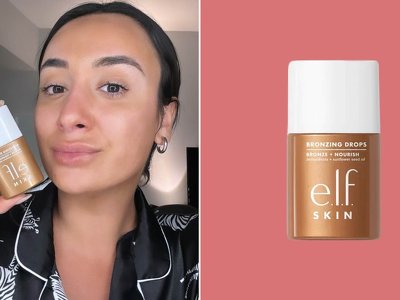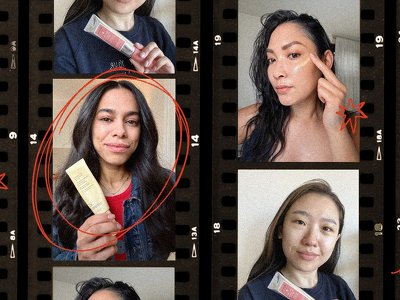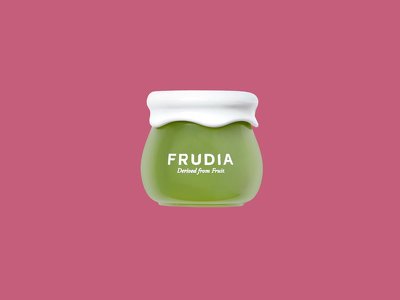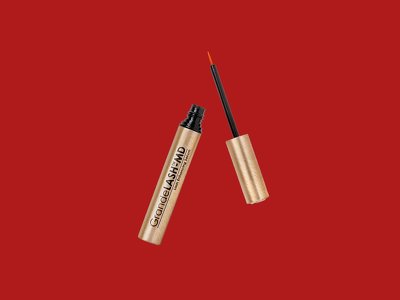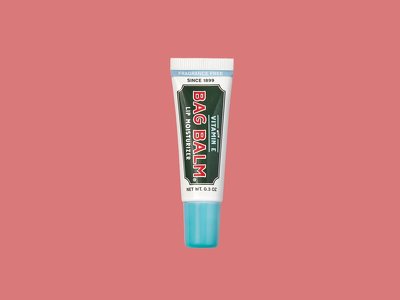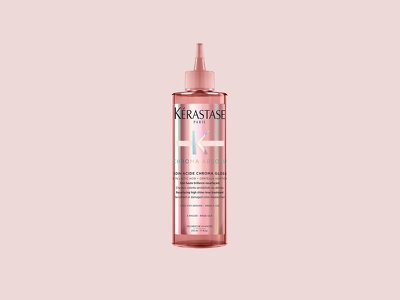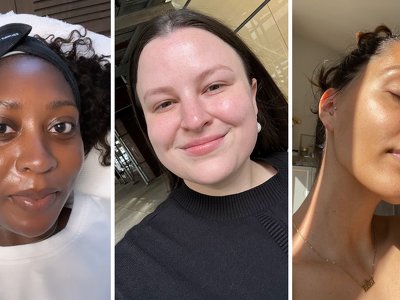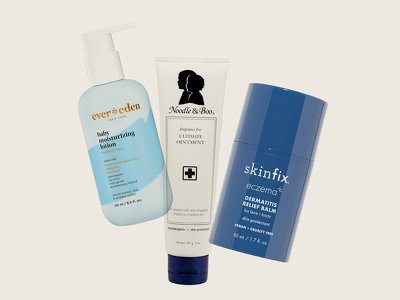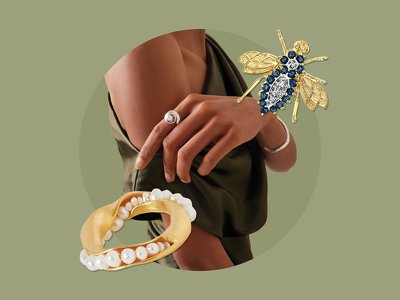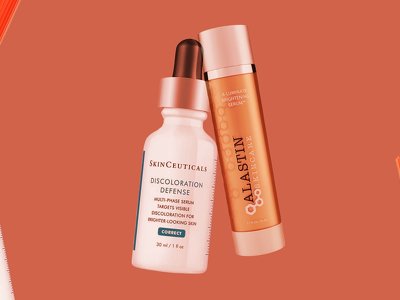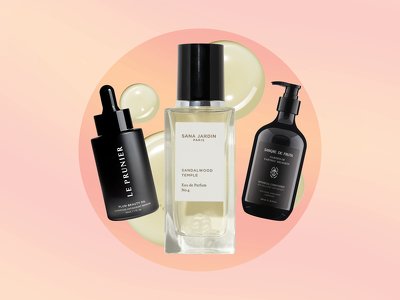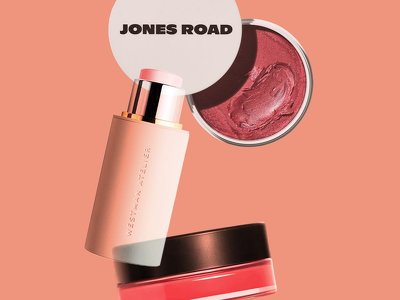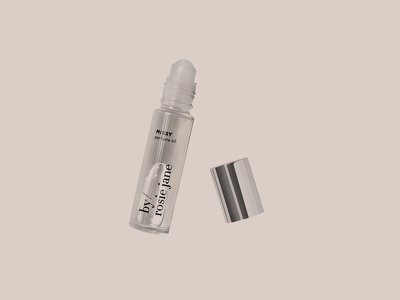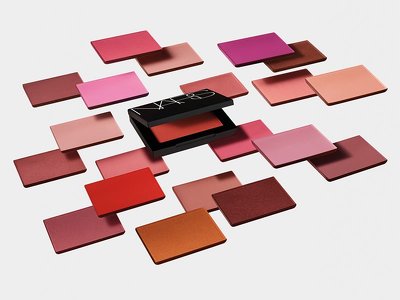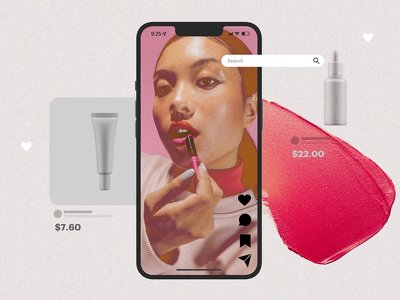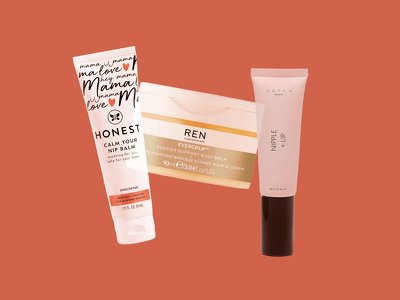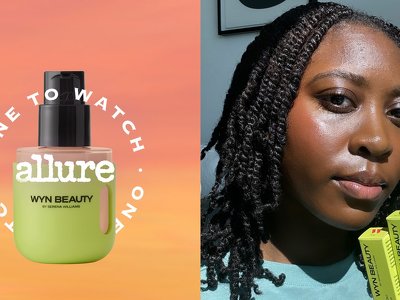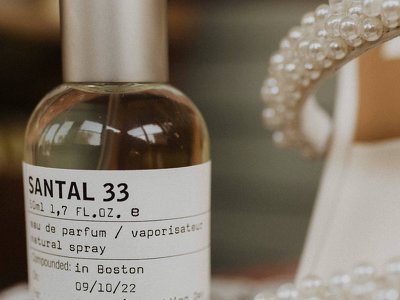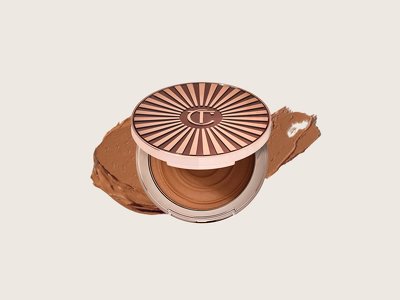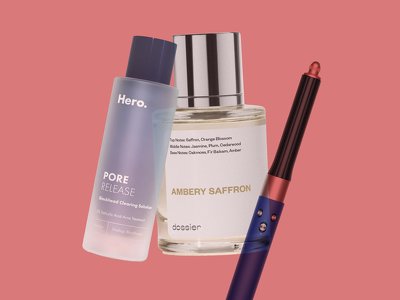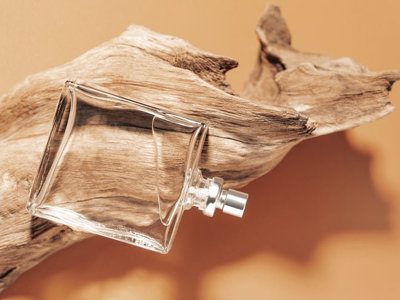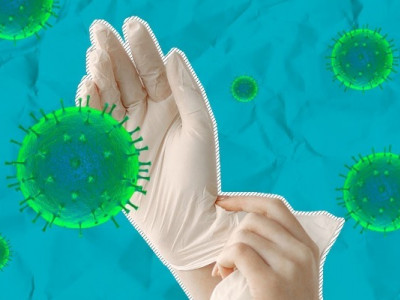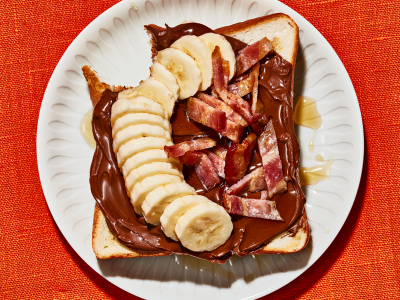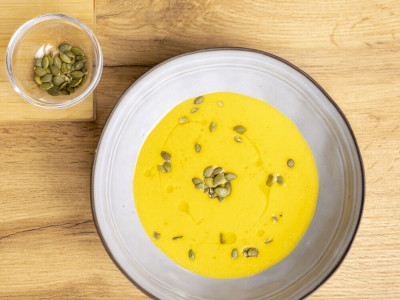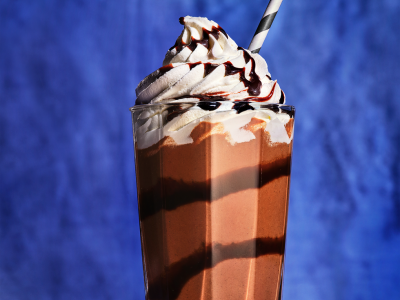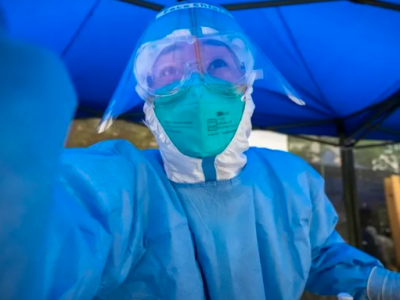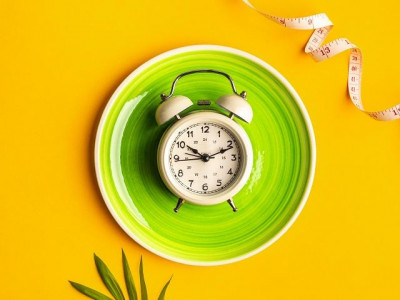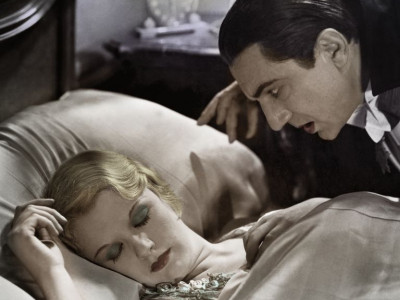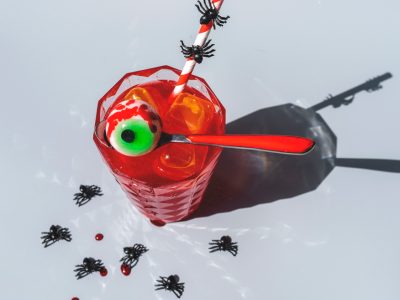These New Peptides Could Give You Better Orgasms

Joe Rogan sits on a couch with four guys. They’re smoking blunts, swallowing slabs of pizza, and talking about a new robot that eats human flesh for fuel. As the conversation turns to Rogan’s body (he’s wearing a hermetic spandex top) he begins listing off the peptides he takes—BPC-157, TB500—like he’s reciting his own source code. This was the first time I heard about peptides.
But if you’re here reading Allure, it probably wasn’t the first time you had. Long used in topical skin-care products for their ability to promote collagen production, peptides have become the panacea for all bodily desires. All peptides can be classified in one of two ways—endogenous (meaning they’re naturally produced by the body) or exogenous (as in they come from an external source, like food or a supplement)—but they all do different things. In addition to smoothing wrinkles, peptides have been said to tack years onto your life (Hailey Bieber once said, "I'm going to NAD for the rest of my life, and I'm never going to age” about NAD+, the coenzyme that boosts energy), pump up your muscles (ipamorelin, a peptide that boost growth hormone), and even train your brain to feel full when your stomach is not: Ozempic is indeed a peptide (GL-P1).
And now, new peptides have come to level-up our orgasms.
But before we get to all of that, what the hell is a peptide? The boring answer is they’re a short chain of amino acids, like teeny tiny bits of protein. When I posed the question on Substack, a PhD student described them as “a conga line of amino acids, but the one in front trips and they all pile on top of each other” I like that. This action triggers the transmission of a particular “message” to the body, coaxing out more of what your body naturally makes—hormones, cells, protein—and replenishing it as you age. So, in the midst of this peptide renaissance, it was only a matter of time before peptides came to optimize our sexual pleasure.
For those with vaginas, desire can be broken down into three simple elements: Libido, meaning the drive for sex; arousal, you get wet and your vulva puffs up; and orgasm, meaning involuntary contractions in your vaginal canal. These are not mutually exclusive and the order in which they occur can flip-flop (arousal before libido is very common for folks with vaginas). These new peptides—when applied as a topical cream or injection—can help with all three.
While we’ve clamped a hand over any talk of female sexual dissatisfaction for most of history, erectile dysfunction has been top of mind for tens of thousands of years. Ancient Romans would drink the semen of eagles for remedy; Ancient Egyptians would mash baby crocodile hearts and rub it on their penis. At the beginning of the 20th century, a Russian scientist named Abrahamovitch Voronoff, convinced all vitality was swishing in the gonads, began transplanting monkey testicles onto humans to solve impotence. This became hugely popular amongst the wealthy (they even opened a monkey farm in the Italian Riviera to keep up with demand), but within a decade, the efficacy was debunked as a placebo. The 1960s saw a wave of penis pumping and implants and then finally, in 1998, the Food and Drug Administration (FDA) approved sildenafil, more commonly known by the brand name Viagra. Today, there are 26 FDA-approved treatments for male sexual dysfunction.
For women? Two. Flibanserin, brand name Addyi, was approved in 2015 for premenopausal women and immediately dubbed female Viagra (despite its only similarity being its pill form—flibanserin works in the brain to modify neurotransmitters like serotonin and dopamine, while Viagra widens blood vessels in the penis). Shortly after, the medication began receiving vitriol for its mediocre results, harsh side effcts like fainting and confusion, and poor sales.
The other option is bremelanotide (PT-141), brand name Vyleesi, which was approved in 2019. Vyleesi is derived from PT-141, a peptide.
Vyleesi (PT-141) works primarily on the libido part of sexual desire. An injection of it in the thigh 45 minutes before sex activates the melanocortin receptors, a class of neuropeptides. Notably, researchers still don’t know the mechanisms behind how PT-141—and activation of melanocortin—lead to increased libido (these gaps in research on female sexuality make for a lethal drinking game!). Nevertheless, its clinical trials showed increased sexual thoughts, motivation, and even reduced self-consciousness. “PT-141 is very helpful; it's kind of an amazing product,” says David Lans, MD, a board-certified internist and rheumatologist and chief of rheumatology at New York-Presbyterian Westchester. His voice is congenial, and he has a child-like delight talking about peptides, which he recommends for patients in his private practice.
Depending on the person, PT-141 can start working at different times. He describes a patient who took the injection, but many hours later still felt nothing so, disappointed, she went to bed. “She woke up about six in the morning with a rabid sexual appetite and had the best sex she ever had. That's not usually how it goes.” Dr. Lans cautions that Vyleesi does come with a few side effects, like nausea and flushing. “You might feel a little yucky shortly after you take it, and then once that passes, you're gonna start to feel really sexy,” he says.
If you’re already Googling it, you’ll see that you can get a PT-141 nasal spray for 30 bucks on Amazon, but Dr. Lans discourages his patients from using these and to instead “get [a generic version] from a compounding pharmacy that has a sterile license,” he says.
PT-141 seems to just be the beginning. What experts are really jazzed about are the other peptides that have shown promise when it comes to prompting sexual pleasure, but are not yet FDA-approved.
One such peptide, new on the scene and thought to stimulate libido, is called kisspeptin. In 1996, a lab in Hershey, Pennsylvania, discovered a gene that inhibits metastasis, which they named KISS1, after the chocolates. (That’s capitalism, baby!) A couple years later, they named the peptide product of KISS1 kisspeptin. It was first regarded as a treatment for metastatic cancers, but the scope of kisspeptin’s possible usage widened about 10 years ago, when researchers found that kisspeptin might be able to intensify sexual desire.
Intrigued, Julie Bakker, a PhD researcher of neuropeptides and sexual behavior at the University of Liège in Belgium, began a study investigating whether this neuropeptide (a type of peptide that functions within the nervous system) could make female mice want to have more sex. “We found that kisspeptin stimulates female sexual behavior and motivation, so of course we thought this would be interesting to test in humans,” Bakker tells me over the phone. While she was jumping through regulatory hoops (“You know, you cannot just inject neuropeptides into people,” she says), a group in London beat her to the punch. The double-blind study took a randomized group of 32 heterosexual premenopausal women with Hypoactive Sexual Desire Disorder (HSDD), the diagnosis for a persistent and distressing lack of desire, and injected them with kisspeptin.
Researchers measured their reaction (neurologically and hormonally) to erotic videos and faces varying in attractiveness, and found that kisspeptin activates parts of the brain related to arousal and romantic love while it quiets regions related to inner-monologue, guilt, and self-consciousness. What’s more, the women injected with kisspeptin self-reported heightened feelings of sexiness as compared to those who were treated with the placebo.
Now, some doctors are prescribing kisspeptin in conjunction with other peptides for maximal libido and greater intimacy. Dr. Lans says sometimes he mixes kisspeptin with oxytocin, which many of us know as the “love hormone,” but it’s also a peptide. An injection of it “allows for a better and more intense orgasm because as you get closer and closer to climax, the intensity of the connection increases,” Dr. Lans says, adding that he doesn’t think it changes the orgasm itself, but allows for greater intimacy and thus a stronger orgasm. However, an analysis of a study in 2014 that involved administering oxytocin nasal spray to couples, found that it did, in fact, increase the intensity of orgasm (this was more acute in those with penises). Couples (especially those with vaginas) reported higher post-coital relaxation, satisfaction, and empathy.
While kisspeptin seems to stimulate libido and might play a part in boosting orgasms thanks to an enhanced emotional connection, there are other peptides that help with the physical mechanisms of getting intimate. Arousal is slippery (hah) and blurs into the other phases of desire. Usually, folks struggling with arousal have pain or dryness during sex.
To help, Dr. Lans says he likes to prescribe growth hormone peptides, like tesamoroline, ipamorolin, or CJC-1295, which increase the natural production of growth hormone. “Most of the benefits are in energy, body composition, sleep, but it also tends to help with a person's sexuality,” he says. In short, it delivers some of the benefits of growth hormone, which spikes during puberty then lilts throughout adulthood, without actually taking synthetic growth hormone (which is unsafe as it functions similarly to steroids). More research is needed on why it revs up arousal, but studies indicate it’s because it increases blood flow to the genitals, thus making the clitoris more sensitive.
All of this sounds nice, but consistent, increased desire will likely never be as simple as popping some peptides into your daily routine. Medications to treat female sexual dysfunction have come under scrutiny, with critics saying that the issue is not our biological sexual response, but the cultural understanding of it. Emily Nagoski, PhD, former director of wellness education at Smith College and author of Come As You Are, wrote a 2015 New York
- Last
- April, 28
-
- April, 27
-
- April, 26
-
-
- April, 25
-
- April, 22
-
-
-
-
- April, 16
-
-
-
-
-
- April, 15
-
-
-
- April, 13
-
-
News by day
5 of July 2025
